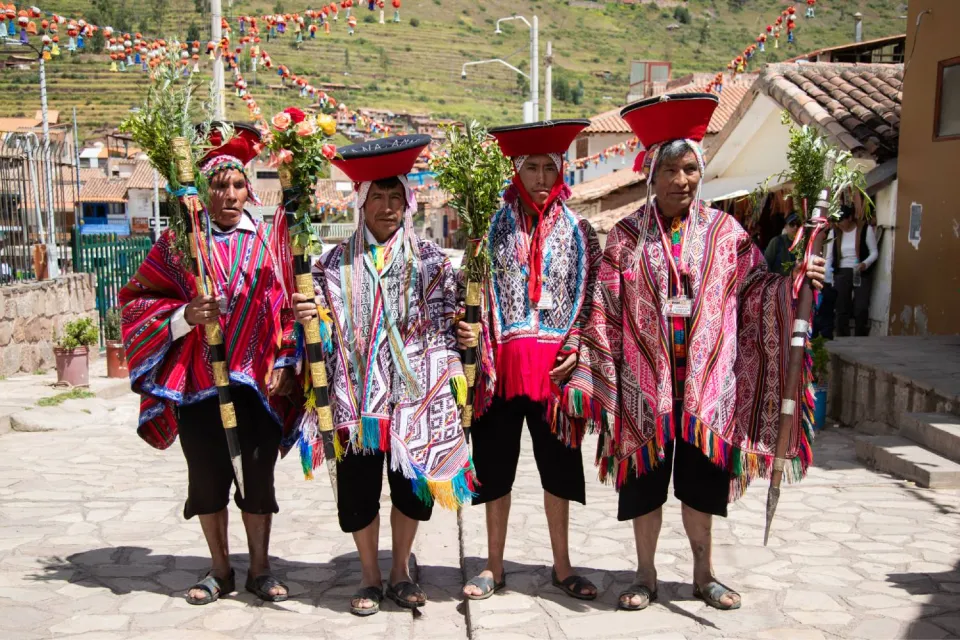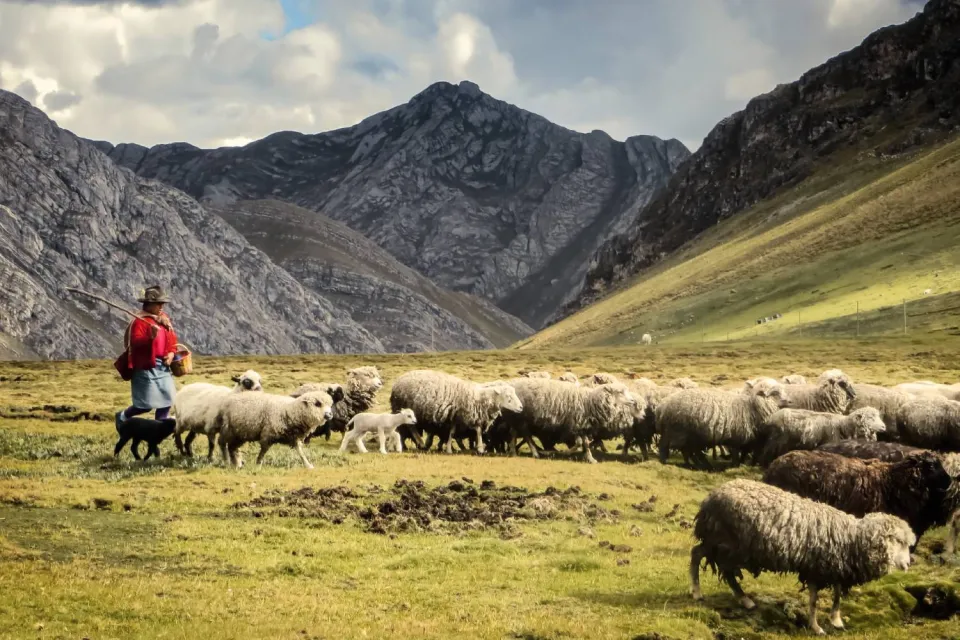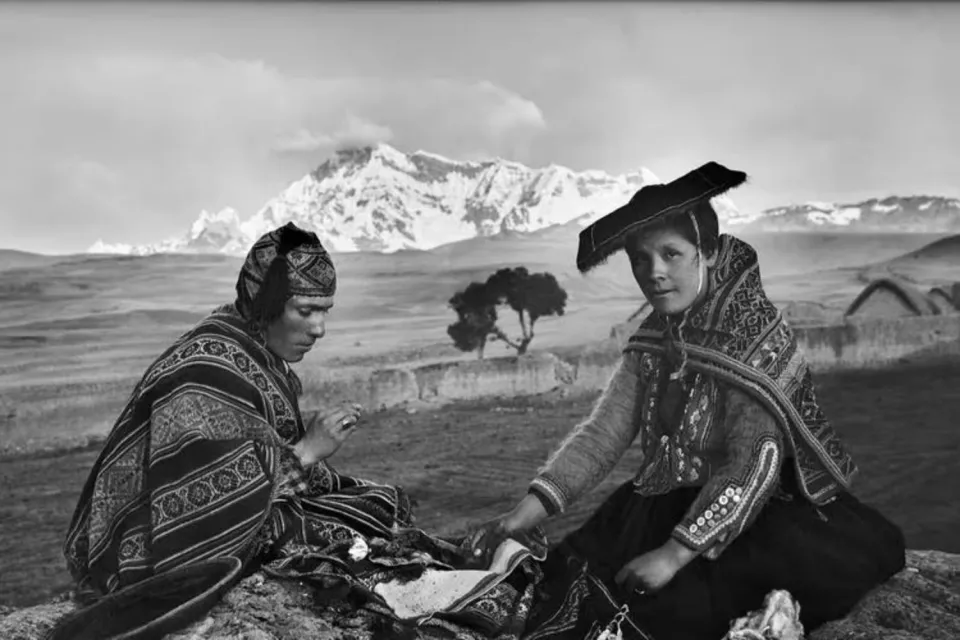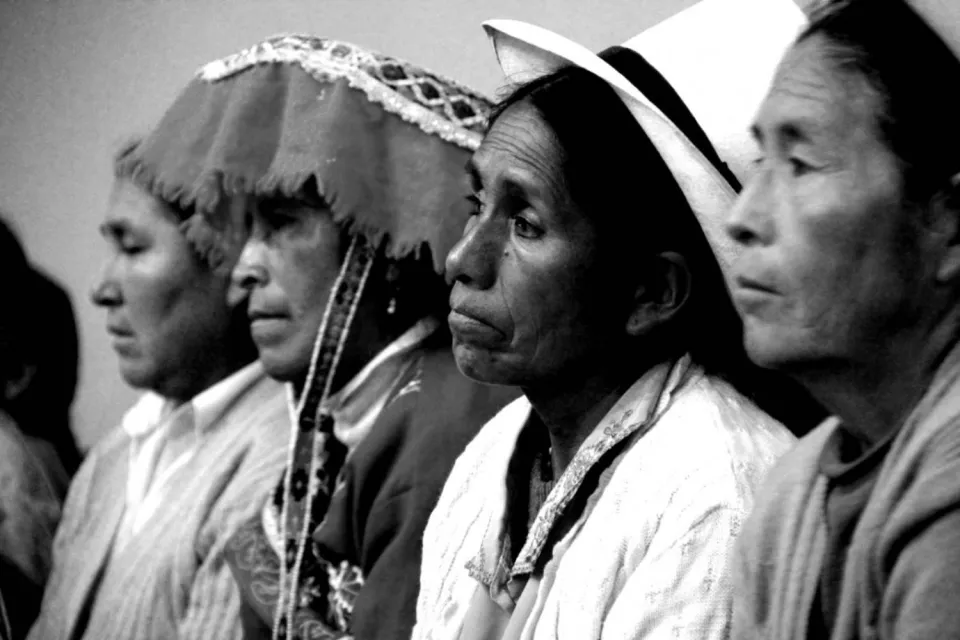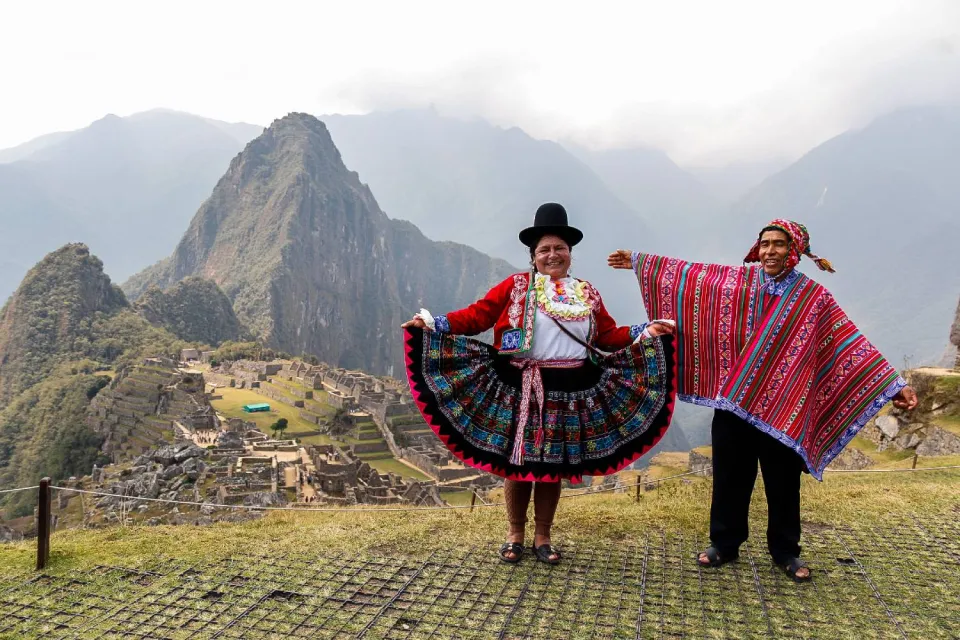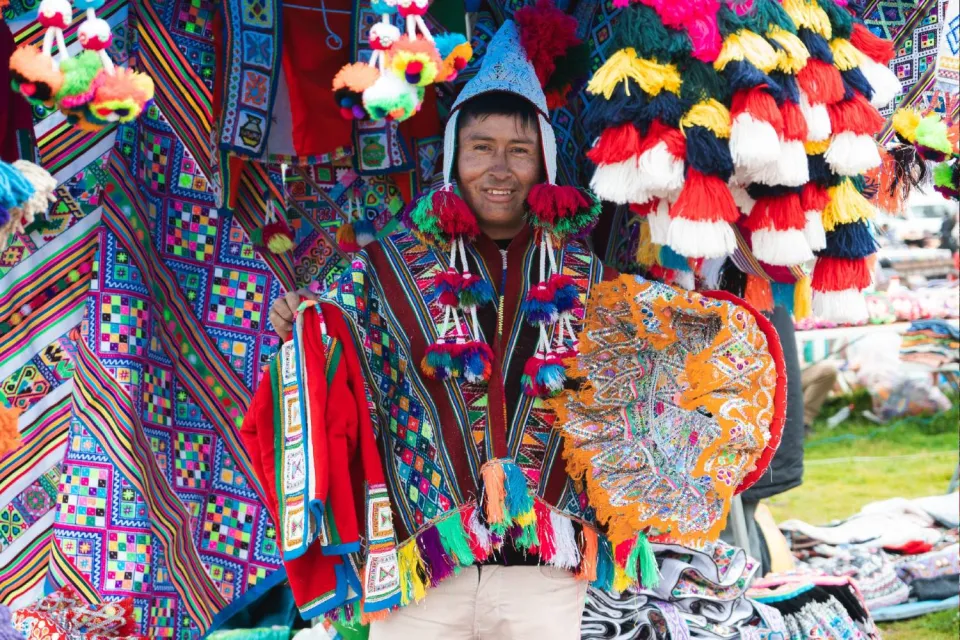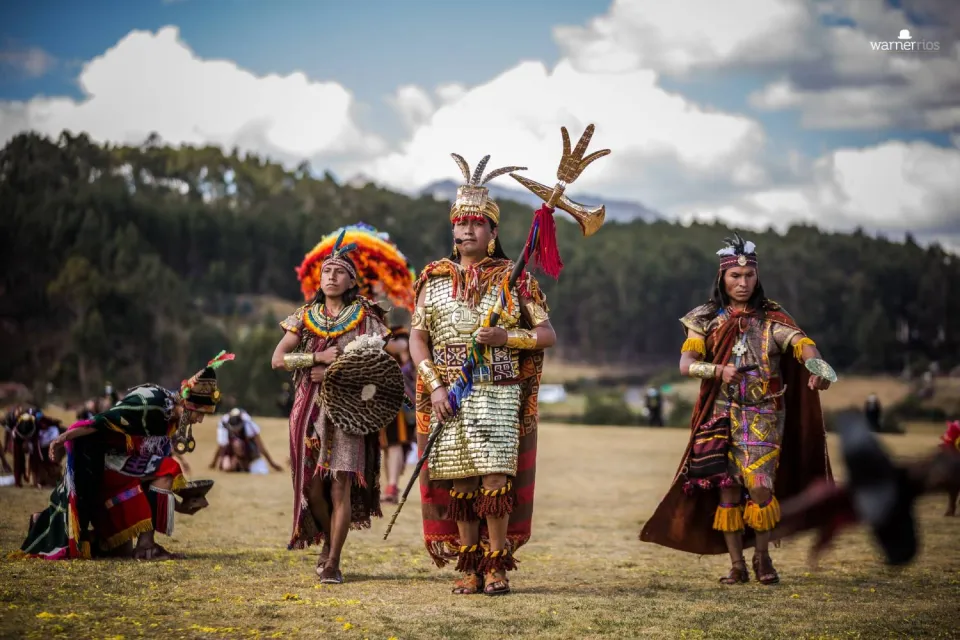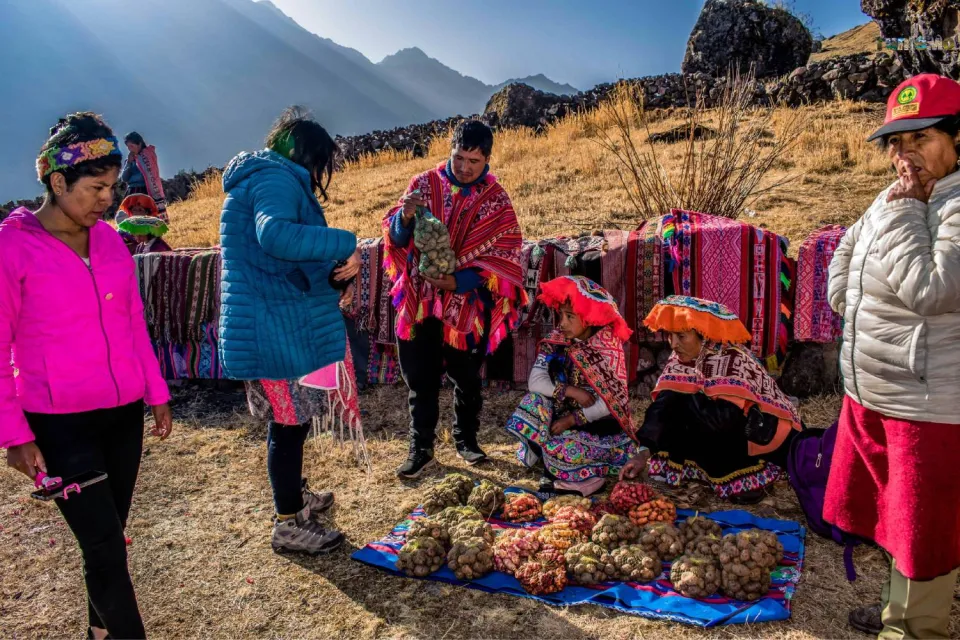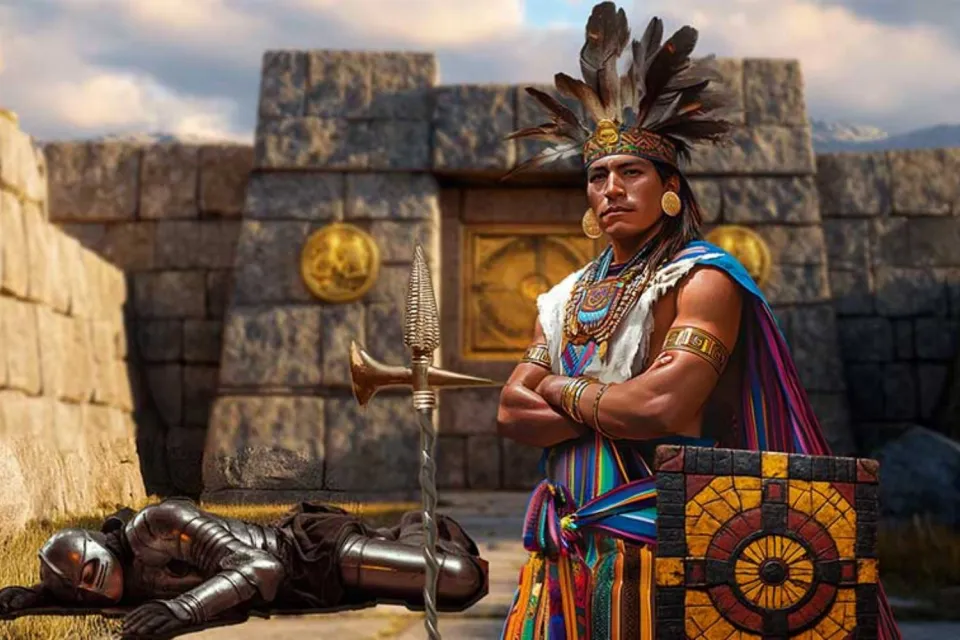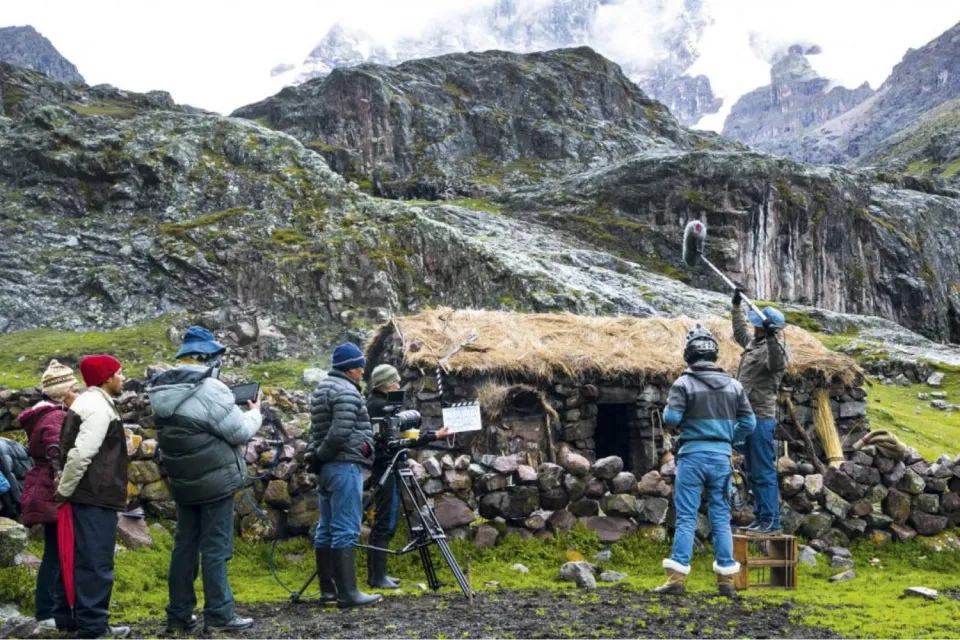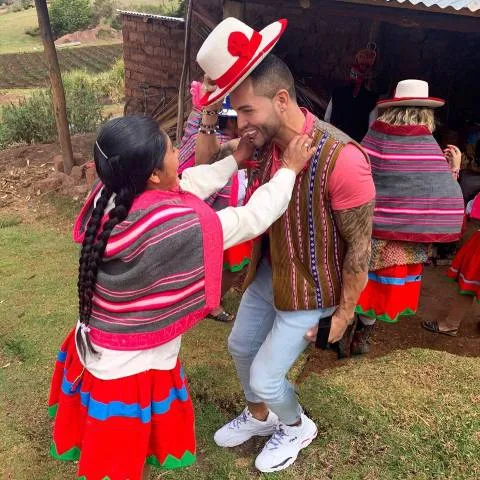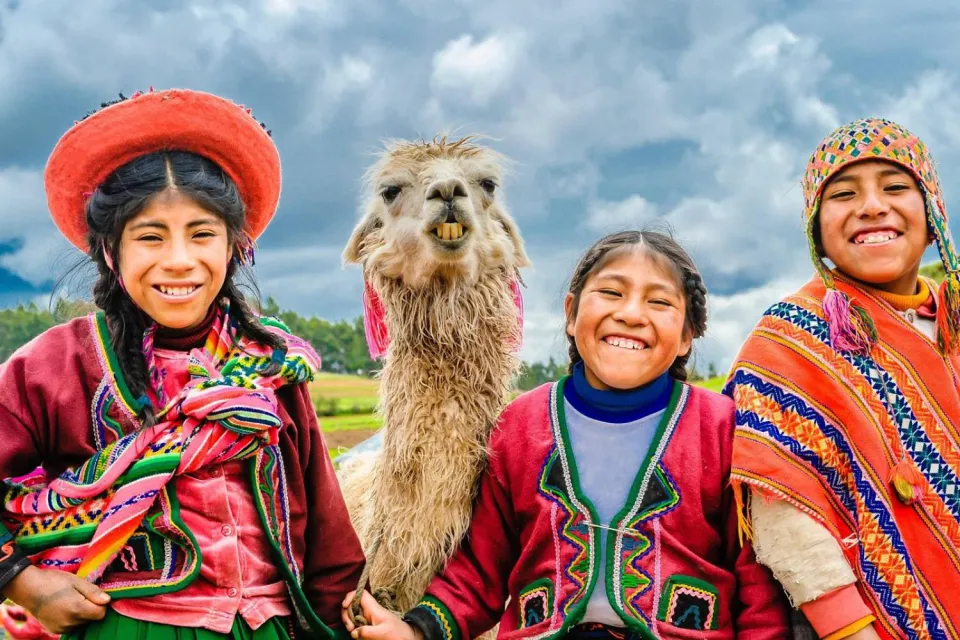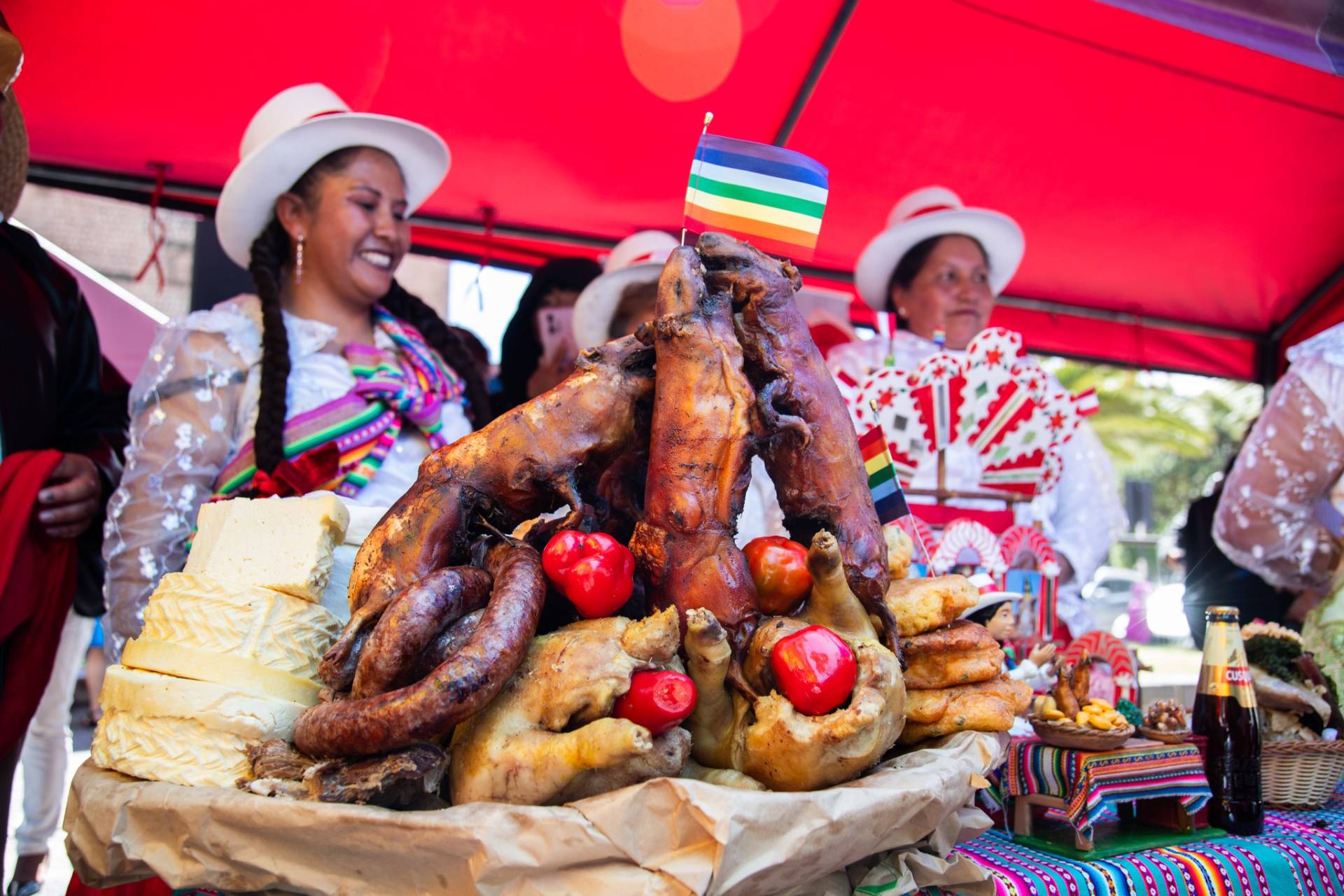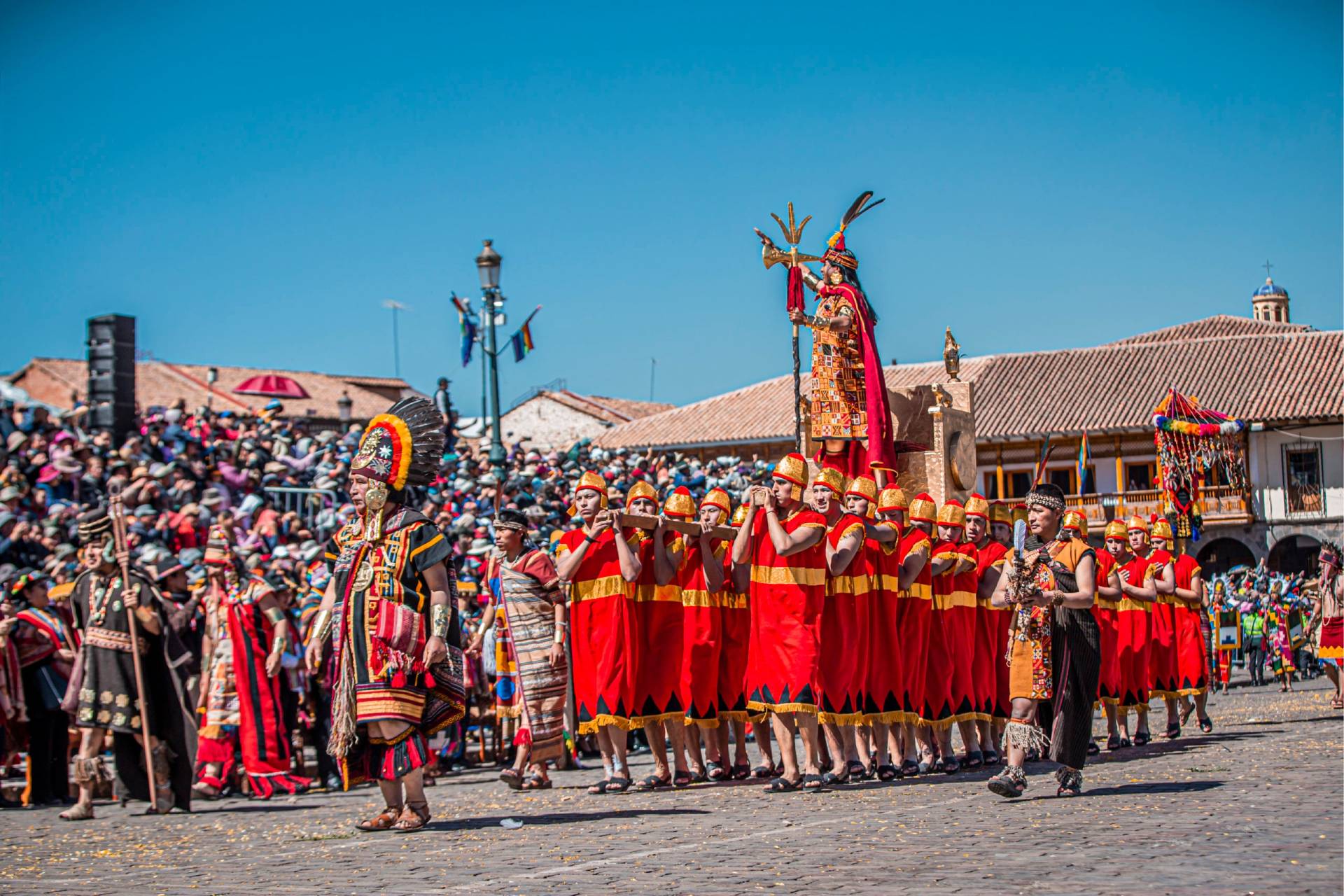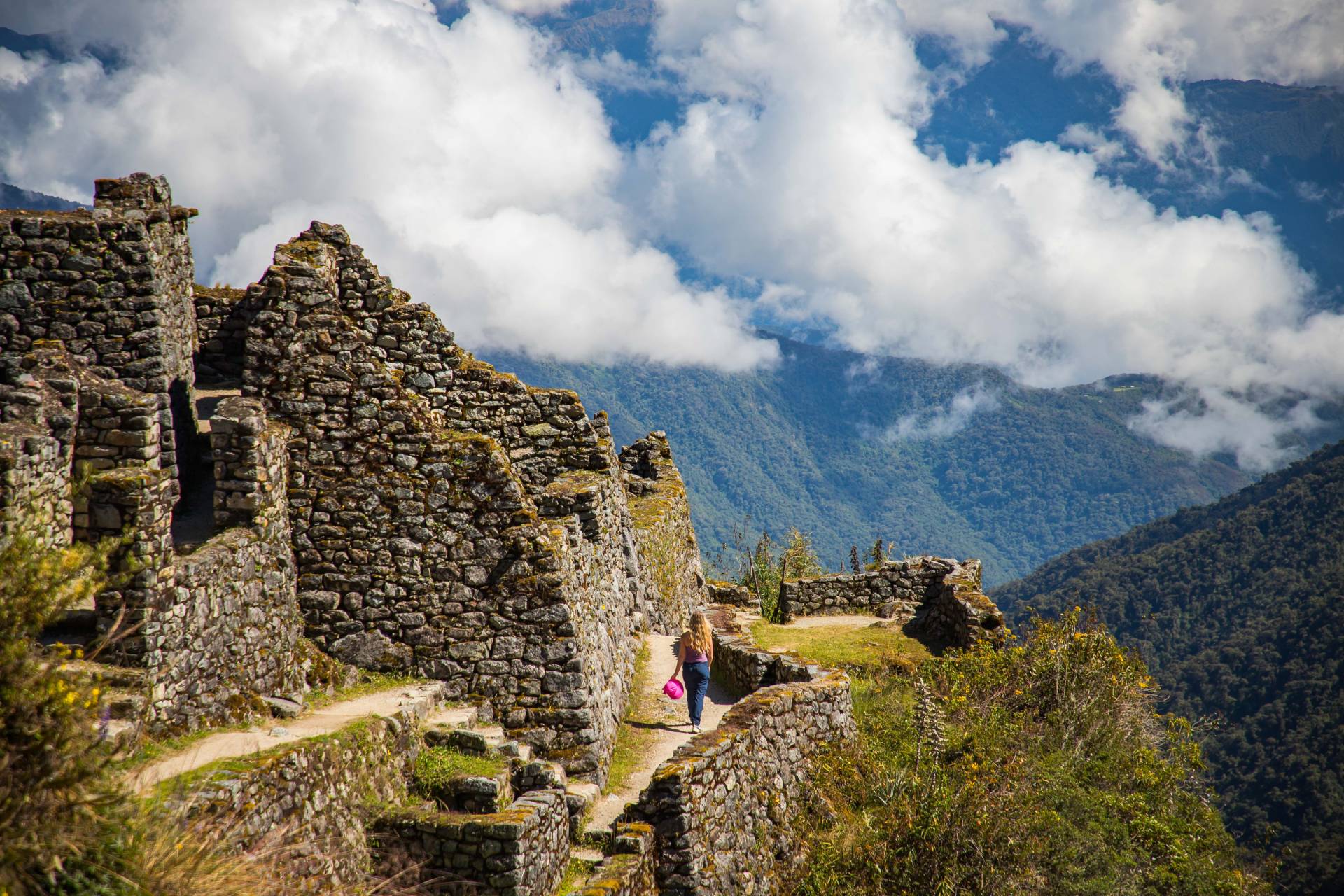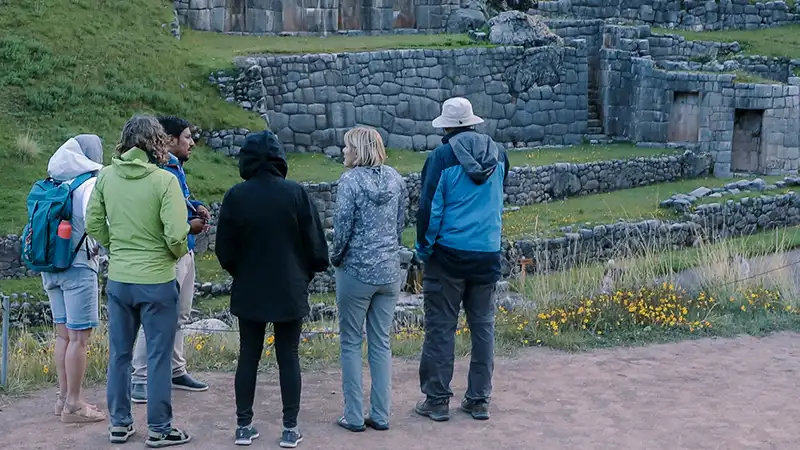Most people believe that the Inca Empire disappeared with the arrival of the conquistadors. But that is false. The Quechua people, the living culture that gave birth to the Tahuantinsuyo, is still breathing, walking, singing and resisting.
It is not a relic. It is not folklore. It is a living civilization that has overcome centuries of conquest, repression and oblivion. And in this article, you will discover why getting to know them not only transforms the way you travel, but also the way you see the world.
What are the Quechua people?
The Quechua people are one of the oldest and most numerous indigenous groups in South America. It is also known as RunaKuna or Runasimi, which means "the people who speak Quechua". It mainly inhabits the Andean region, especially Peru, although it is also present in Bolivia, Ecuador, Colombia, Chile and Argentina.
In Peru, the Quechua are the largest indigenous group. Their communities are distributed from the central highlands to the southern Andes, in regions such as Cusco, Puno, Ayacucho, Huancavelica, Apurímac and Junín.
Legacy from the Incas
The Inca Empire was the largest in South America before the arrival of Europeans. To facilitate communication between the different peoples of Tahuantinsuyo, the Incas adopted Quechua as their official language.
When the Spanish arrived, they tried to suppress the language and many Quechua traditions. However, the Quechua people resisted. Despite centuries of discrimination and neglect, their language, culture and worldview are still alive today.
Where do the Quechua live today?
The majority of the Quechua live in rural areas, in communities located outside the cities. They prefer territories where the land is fertile for agriculture and in the high pastoral areas known as Andean punas. It is common to find them along the Andes mountain range, living in close relationship with nature.
These communities are organized collectively, with a communal leader and strong ties of mutual aid. Their main economic activities are agriculture (growing potatoes, corn, quinoa) and livestock (raising alpacas, llamas and sheep).
How many people speak Quechua today?
Currently, more than 5.1 million people speak Quechua in Peru, according to the last National Census. It is the most widely spoken native language in the country.
Although many people are bilingual and fluent in both Quechua and Spanish, more and more children and young people are recovering their ancestral language thanks to bilingual intercultural education programs that promote the use of Quechua in schools.
History of the Quechua people
Origin
The origin of the Quechua people is not entirely clear, since their language had no writing. However, historians recognize the Inca Empire as one of the first to conquer the Quechua people.
Before the Inca domination, other pre-Inca cultures such as the Aymara, Nazca, Waris, and Yuncas had already shaped and enriched the Quechua's traditions and forms of organization.
The arrival of the Spaniards
On November 16, 1532, the capture of the Inca Atahualpa by the Spaniard Francisco Pizarro marked a devastating turning point for the Quechua people. The arrival of the conquistadors brought not only subjugation, but also infectious diseases such as influenza and smallpox, which caused the death of millions of Quechua people, who had never before faced anything similar.
The Spanish destroyed the Quechua social system, imposed forced labor, provoked famine, genocide and profound human exploitation. In addition, they took Quechua women as wives, which gave rise to miscegenation. Today, scholars and linguists classify many of their descendants as part of an ethnolinguistic group.
Colonial times
During the colonial period, the life of the Quechua changed drastically. Large landowners took away their land, forcing them to become serfs. Harsh and abusive working conditions sparked peasant revolts, and colonial authorities repressed them with extreme violence.
In Peru, the regions that suffered most from these injustices were Ayacucho, Arequipa, Cusco and Puno. In the midst of so much pain, music became a means of emotional relief. Musicians created the huayno, loading its lyrics with sadness and resistance, especially in Ayacucho. Over time, some variants of the huayno acquired a more cheerful tone.
"Don’t think that protest found expression only in the huayno. Luis Abanto Morales also used Creole music to convey the deep feeling of the Quechua people in his song ‘Cholo Soy.’"
The largest of the indigenous rebellions occurred between 1780 and 1781, led by José Gabriel Kunturkanki, better known as Túpac Amaru II.
Current events
In the 1980s, about 70,000 people, mostly Quechua, died as a result of the internal armed conflict between the Peruvian government and the Shining Path. Both sides had fighters of white and mestizo descent and committed abuses, such as taking Quechuas hostage to sow fear.
After the conflict, President Alberto Fujimori promoted the infamous policy of forced sterilization, which affected more than 200,000 Quechua and Aymara women, many without their consent.
Although the Quechua people keep their culture alive, they still confront serious challenges: poverty, discrimination for speaking Quechua or wearing traditional clothing, and limited access to health and education services.
However, there have also been important advances. There are laws that protect the rights of indigenous peoples and promote the use of Quechua in education, justice and the media.
Challenges for the Quechua people
The Quechua people today face multiple challenges to preserve their traditions in a modern, globalized world. Their main threats are discrimination, racism and economic precariousness, as many depend on agriculture and handicrafts to survive.
With globalization, their products - natural and unprocessed - are increasingly undervalued in a market dominated by industrialized products. Some foreign companies, such as Loro Piana, take advantage of these peoples by buying vicuña wool, one of the finest in the world, at miserable prices, while selling garments at exorbitant prices.
The centralism of the Peruvian government also harms the Quechua villages, especially those far from Lima. The lack of hospitals, quality schools and basic services hinders their development. In response, community tourism has become a valuable tool to improve their economy and raise awareness of their culture.
Future of the Quechua people
Today, many Quechua people are proud of their identity. There are young people using TikTok to teach Quechua, women leading weaving cooperatives, and activists fighting for the rights of their communities.
The road is difficult, but the Quechua people have demonstrated an impressive ability to adapt without losing their essence. The more their history is known and their culture is valued, the more attention they will receive from governments and society in general.
"Do you wonder if pure-blooded Quechua still exist? Although they are few, they do exist. For example, the people of Los Qeros, considered the last Inca community, live in a remote area of Cusco. There are also the Wankas, another Quechua group of ancestral lineage in central Peru."
Culture, language and identity of the Quechua people
The Quechua people do not define themselves only by their language, but also by the way they dress, work, organize, and celebrate. Below, we explore some of the key elements of their rich culture:
The Quechua language, still alive
Quechua is one of the oldest languages in the world that is still alive thanks to oral traditions passed down from generation to generation through songs, stories, myths and legends in the native language.
Although many Quechua speakers have learned Spanish to communicate with outsiders, in their homes and communities they still proudly use their native language. The Quechua language is much more than a means of communication: it is an expression of cultural identity.
Traditional dress
Quechua clothing is colorful and full of meaning. Each garment can reflect the wearer's cultural identity, marital status and even community of origin.
- Women: They wear polleras, petticoats, llicllas (blankets) and monteras (hats).
- Men: Wear ponchos, chumpis (sashes), chullos (hats) and chuspas (bags).
- Both: They wear ojotas, sandals made from recycled tires.
Over time, western clothing has influenced the communities closer to the cities. Some young people wear sports shirts and sweatpants, while older people tend to maintain their traditional clothing, such as wool vests.
Quechua handicrafts
Quechua handicrafts - such as textiles, ceramics and weavings - are highly valued for their beauty and deep cultural significance. These pieces are elaborated with ancestral techniques, passed down from generation to generation.
Designs with meaning
The patterns represent mountains, sacred animals, constellations, plants and local legends. Each design tells a story loaded with symbolism.
Handmade
Each piece is made by hand, using backstrap or treadle looms. Small imperfections are signs of authenticity, very different from products made by industrial machines.
Traditions and customs
The Quechua people proudly preserve many of their ancestral traditions, adapting them to the present without losing their essence.
- They practice forms of community work such as minka and ayni.
- They celebrate Andean religious festivities with a profound syncretism between the Catholic and the ancestral.
- They make offerings to the Pachamama, where they give coca leaves, corn, chicha and sweets as a symbol of gratitude and to ask for good results in harvests, trips or projects.
Music and dances
Quechua music uses traditional instruments such as quenas, sikus, charangos and zampoñas. The most representative genre is the huayno, whose name comes from the Quechua term huayñunakunay, which means “to dance holding hands”.
The festivities include traditional dances with costumes representing mythical or historical characters. In the times of the Inca Empire, music and dances were essential in ceremonies, such as Inti Raymi, which is still celebrated in honor of the Sun God every June.
Today, Quechua music has evolved and merges with genres such as rock, rap and pop. There has even emerged a movement known as "Andean pop" or "Quechua pop", which seeks to revalue the language and culture through social networks and modern media.
Andean agriculture
Agriculture continues to be the mainstay of Quechua life. They continue to grow ancestral foods such as potatoes, corn and quinoa, which are an essential part of their diet and are well adapted to Andean climates.
The communities practice sustainable agricultural techniques, such as the use of stepped terraces to maximize the use of rainwater and conserve fertile soils.
Traditional tools include the chakitaclla, used to dig holes and sow seeds. The ayni communal work system is still in place: when a farmer needs help, the whole community pitches in, knowing that the favor will be repaid later.
Traditional medicine
In the most remote areas, Quechua medicine is based on the use of medicinal plants and the figure of the shaman, who acts as a healer, spiritual guide and protector of the community.
Among the most commonly used plants are
- Quinine: against malaria.
- Coca leaf: useful to alleviate hunger, fatigue, pain and altitude sickness.
In urban areas, many Quechuas combine this ancestral wisdom with modern medicine.
Andean Cosmovision and Mythology
For the Quechua, nature is alive. Pachamama (Mother Earth) and the Apus (mountain spirits) are sacred. Everything in their world is interconnected, and that is why they seek to live in balance with their environment.
They believe in the existence of three sacred worlds:
- Hanan Pacha: the world above.
- Kay Pacha: the earthly world, where we live.
- Ukhu Pacha: the lower or inner world.
These worlds are not separate, but interact constantly.
Religion and beliefs
Although Catholicism predominates in Peru, many Quechua maintain syncretic beliefs that fuse the ancestral with the Christian. A clear example is Corpus Christi in Cusco, which today features a Catholic procession, but has roots in the ancient celebrations of Inti Raymi and the veneration of Inca mummies.
The conquistadors tore down Inca temples and built churches over them. However, they left hidden signs of the Quechua cosmovision, such as snakes and pumas carved into the walls.
It is said that under some images of saints, such as San Sebastian of Cusco, there are remains of hidden Inca mummies, which would explain the large size and weight of their bases.
This fusion also occurs in gastronomy, as in the chiriuchu, a Quechua dish that was adapted with Spanish ingredients.
Myth of Inkarri
One of the best known myths is that of Inkarri (Inca King). According to legend, when Atahualpa was executed, he vowed to return to restore the balance between Pachamama and his children.
It is said that the Spaniards buried parts of his body in different parts of the ancient empire, and that his head rests under the current Government Palace in Lima.
It is believed that the lost city of Paititi was founded by Inkarri, waiting for the moment of his return.
Curiosities of the Quechua people
The Quechua people are an inexhaustible source of cultural, historical and artistic richness. Below, we share with you some curiosities that reflect their greatness and legacy:
Notable Quechua characters
Among the most recognized Quechua characters throughout history are:
- Tupac Amaru II - Leader of the greatest indigenous rebellion against Spanish rule.
- Manco Capac - Mythical founder of the Inca Empire.
- Martín Chambi - Famous Peruvian photographer who portrayed Andean life in the 20th century.
- Renata Flores Rivera - Young singer who revalorizes Quechua through pop and rap.
- Q'orianka Kilcher - Actress with Quechua roots who played Pocahontas in the movies.
- Nanci Iza Moreno - Ecuadorian Quechua activist for the rights of indigenous peoples.
- Diego Quispe Tito - Indigenous painter of the XVII century, master of the Cusquenian School.
- Francisco Tito Yupanqui - Quechua sculptor recognized for his image of the Virgin of Copacabana.
- Alejandro Toledo - Former president of Peru of Quechua descent.
- Renato Tapia - Peruvian soccer player who has stood out at international level and has Quechua roots.
The Quechua people in the cinema
- The Secret of the Incas (1954): American film shot in Machu Picchu. One of its protagonists was Yma Súmac, a renowned Peruvian singer of Quechua descent.
- Wiñaypacha (2017): Peruvian film spoken entirely in Quechua. It narrates the lonely and hard life of an elderly Quechua couple in the Andes.
- The follies of the emperor and Tadeo Jones: Although they are fictional animations, they are clearly inspired by elements of Inca and Andean culture.
- Max is Missing: Family adventure film where two children arrive at Sacsayhuamán, jokingly known by some tourists as "Sexy Woman".
Ancestral wisdom and customs
- Quechua agricultural calendars: Based on the phases of the moon, the movement of the stars and the behavior of the climate. These calendars indicate the exact moment to sow and harvest.
- Anti-seismic houses: In the countryside, many Quechua houses are made of stone, mud and ichu (Andean grass) roofs. This type of traditional construction is not only ecological, but also resistant to earthquakes.
- Linguistic diversity: Quechua varies according to the region. For example, the Quechua of Cusco is different from that of Ayacucho, although both share common roots.
- Weavings with soul: Quechua weaving is considered one of the most valued in the world, not only for its beauty and technique, but also because each design represents stories, links with nature and community unity.
Respectfully visit Quechua communities
Visiting a Quechua community is a transformative experience. More than a tourist destination, it represents an opportunity to learn, share and connect with a living culture that has withstood centuries of changes and challenges. For your visit to be meaningful, both for you and for the community, it is essential to do so with respect, humility and responsibility.
What to expect when visiting a Quechua community?
When you arrive in a Quechua community, you will discover an environment very different from conventional tourism: rural life, intact traditions and a strong sense of collectivity. You can expect:
- A warm and sincere welcome, although some villagers may be reserved at first.
- Quiet rhythms of life connected to nature and agricultural cycles.
- Traditional practices such as loom weaving, ancestral cooking and herding.
- Food based on local products such as potatoes, quinoa, corn, oca and beans.
Remember: you are not visiting a museum, but the home of real people. Respecting their time, space and lifestyle is essential.
How to interact with the local population?
- Greet with kindness and, if you can, learn a few phrases in Quechua. A simple “rimaykullayki” (hello) can generate smiles and open doors.
- Ask permission before taking photos, especially of older people or children. Some people value their privacy or consider images to have spiritual significance.
- Participate humbly in activities. You can observe, help in the kitchen, learn to weave, or join in the work in the fields. Always ask respectful questions and avoid imposing your customs.
- Avoid giving money or sweets to children. Although it may seem a kind gesture, it can generate dependency or affect local dynamics. If you wish to contribute, ask about community, school or health initiatives.
Why is ethical and responsible tourism important?
Responsible tourism protects Quechua culture and prevents its traditions from being reduced to mere tourist spectacles. It also strengthens the local economy in a fair and sustainable way.
Visiting ethically means:
- Paying fair prices for products and services.
- Choose agencies and experiences that work directly with communities and respect their autonomy.
- Reduce your environmental impact: don't leave trash, respect natural spaces and consume consciously.
- Value the experience as a cultural exchange, not as an entertainment service.
Visiting a Quechua community is much more than an excursion: it is an opportunity to grow as a person, contribute to the collective well-being and support the preservation of one of the most important cultures of the Andes. Do it with respect and your experience will be unforgettable for both of you.
Ultimate Trekking and its support to the Quechua people
At Ultimate Trekking, we strongly believe in responsible tourism and respect for living cultures. That is why our agency actively works to support the local Quechua communities along the Inca Trail.
How do we support the Quechua communities?
We provide direct employment opportunities for Quechua people such as:
- Porters and porters
- Cooks
- Local guides.
By hiring members of these communities, we seek to preserve their traditions, their connection to nature and their ancestral knowledge, all while offering a fair wage and decent working conditions.
An authentic Inca Trail experience
If you have already done or plan to do the Inca Trail with Ultimate Trekking, you will notice that many of the porters are Quechua people, who are not only in charge of carrying the trekking equipment, but also:
- They share useful tips with you to make the trek easier and more comfortable.
- They offer you constant help and encouragement in every part of the trek.
- They transmit their wisdom about the mountains, nature and Andean culture, with a knowledge that only those who have lived there can share.
Ultimate Trekking not only takes you to Machu Picchu. It connects you with an ancestral people who, thanks to your visit, can strengthen their economy, share their heritage and continue walking proudly into the future.
Frequently asked questions
- Are the Quechuas Inca?
No, not all Quechuas were Incas, but all Incas were Quechuas.
The Quechua people are an indigenous group native to the Andes that existed long before the Inca Empire. The Quechua maintained their language, culture and traditions during Inca rule and continue to this day.
- Is it difficult to learn Quechua?
Learning Quechua may seem challenging at first, especially if you speak Spanish, as it has a very different structure and sounds.
However, if you speak English, the process may be easier, as both languages share some similarities in their grammatical structure. In addition, Quechua is pronounced as it is written, which makes it easier to learn.
Nowadays, there are many options to learn Quechua: the Peruvian government offers free courses, you can also find mobile applications, videos on social networks and bilingual schools in several regions of the country.
- Can I volunteer or stay in a Quechua community?
Yes, you can volunteer or stay as a visitor in a Quechua community, as long as you do it with respect and through reliable programs. There are several platforms that, in addition to allowing you to live with the communities, offer Quechua or Spanish classes.
In Cusco, for example, there are several options to live this experience. Many tourism agencies also promote experiential tourism, where travelers live with Andean communities and learn about their customs, agriculture, cuisine and more.
An excellent option is the Lares Trek, a journey to Machu Picchu that combines nature, adventure and authentic encounters with Quechua communities along the way. If you are interested in this package, you can contact us by WhatsApp and one of our consultants will provide you with all the information you need.
- How many dialects of Quechua are there?
Quechua has approximately 15 to 30 dialects, depending on the classification used. The variations are due to geographical, historical and linguistic factors. In the modern classification, some of the most representative dialects are:
- Cusco-Collao Quechua: spoken in the regions of Cusco, Puno, Bolivia and northern Argentina.
- Ayacucho Quechua (Chanca): predominant in the south-central region of Peru.
- Quechua of Junín: spoken in the central highlands of Peru.
- Quechua of Ancash: spoken in the northern Peruvian Andes.
- Ecuadorian Kichwa: spoken in the highlands of Ecuador.
- Pasto and Imbabura Quechua: spoken in southern Colombia and northern Ecuador.
- How to recognize authentic Quechua handicrafts?
Recognizing authentic Quechua handicrafts is easier than it seems. You just need to observe some key details that reveal its origin and authenticity:
1. Natural materials
True Quechua handicrafts, especially textiles, are made with natural fibers such as alpaca, sheep or vicuña wool. When you touch them, you will feel softness, warmth and a unique texture, very different from that of synthetic fibers. That sensation is one of the first indicators of authenticity.
2. Natural colors
The colors are not excessively bright, as Quechua artisans use natural dyes extracted from plants, roots, insects (such as cochineal) and minerals.
This results in a palette of earthy colors, deep and harmonious with the Andean landscape. Each color has a reason for being and a connection with nature.
3. Ancestral technique
Most of these pieces are made by hand on traditional looms, using techniques passed down through generations. When you look at an authentic garment, you will notice slight imperfections that confirm that it was handmade, not mass-produced by a machine.
The Quechua people are much more than an indigenous group. It is a living testimony of resistance, ancestral wisdom and deep connection with the land. Knowing their history and present is the first step to value and respect them.
And now that you know all this, don't you feel like learning a few words in Quechua or visiting an Andean community?

